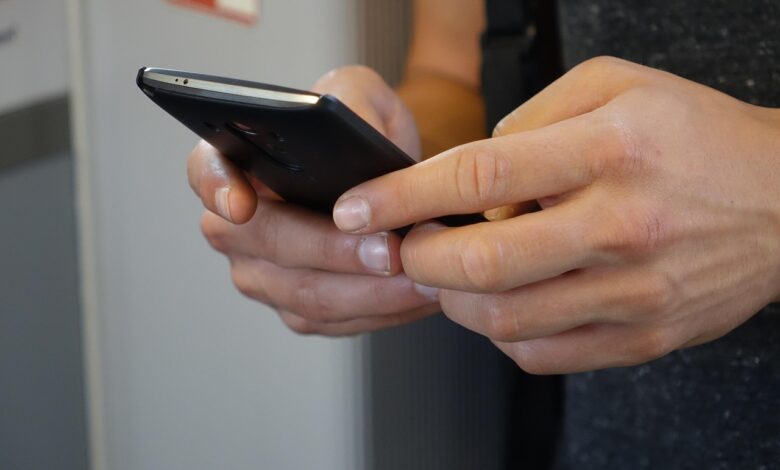Fans Call on Taylor Swift to ‘Do Better’ After Accusations of Using AI for Promo Videos

Fans Call on Taylor Swift to ‘Do Better’ After Accusations of Using AI for Promo Videos
Estimated reading time: 6 minutes
- Taylor Swift’s fanbase, ‘Swifties,’ initiated the #SwiftiesAgainstAI movement after suspecting artificial intelligence (AI) use in promotional videos for a new album.
- The controversy highlights a growing debate in creative industries concerning the balance between technological efficiency and the imperative of artistic authenticity.
- Fans expect artists to demonstrate transparency in AI usage, prioritize human talent, maintain brand authenticity, and uphold ethical responsibilities in their creative processes.
- Similar backlashes, such as Marvel’s ‘Secret Invasion’ AI intro, underscore a broader public sensitivity to AI’s perceived displacement of human artistry.
- The article proposes actionable steps for artists, fans, and the industry to navigate AI ethically, ensuring human creativity remains central to artistic expression.
- The Spark: A Scavenger Hunt Gone Viral
- The Core of the Controversy: Authenticity vs. Efficiency
- Real-World Example: Marvel’s ‘Secret Invasion’ AI Intro
- The Call to ‘Do Better’: What Fans Expect from Artists
- Actionable Steps for Artists, Fans, and the Industry
- Conclusion: The Enduring Value of Human Artistry
- Frequently Asked Questions (FAQ)
The landscape of music promotion is constantly shifting, yet one constant remains: the deep connection between artists and their audience. Recently, pop icon Taylor Swift found herself amidst a digital maelstrom, with her fervent fanbase, the ‘Swifties,’ raising significant concerns over the alleged use of artificial intelligence (AI) in her promotional content. This controversy swiftly ignited a robust discussion about authenticity, creative integrity, and the very nature of human artistry in the digital age.
What began as murmurings of suspicion quickly escalated into a collective demand for clarity. Fans, renowned for their meticulous attention to detail and unwavering dedication, meticulously scrutinized visual assets associated with a new album campaign. The incident swiftly transformed from a minor internet blip into a widespread #SwiftiesAgainstAI movement, echoing a broader sentiment across creative industries: the imperative to discern where genuine human creativity ends and automated processes begin.
The Spark: A Scavenger Hunt Gone Viral
The genesis of this online uproar can be traced to a specific promotional event – an eagerly anticipated online scavenger hunt. Such interactive campaigns are a hallmark of Swift’s marketing, often designed to engage her massive following and generate buzz. However, this particular endeavor took an unexpected turn, not for its intricate puzzles, but for the uncanny visuals that accompanied it.
As Swifties immersed themselves in the digital quest, a pattern of visual inconsistencies started to emerge. Images and video clips embedded within the promotional materials displayed tell-tale characteristics often associated with generative AI. These included subtle distortions in facial features, unnaturally smooth textures, repetitive or generic background elements, and an overall aesthetic that felt distinctly at odds with Swift’s typically polished and personally curated brand.
The collective recognition of these visual anomalies quickly coalesced into a powerful unified voice. Indeed, A scavenger hunt campaign to promote Taylor Swift’s new album The Life of a Showgirl resulted in a viral #SwiftiesAgainstAI campaign. This hashtag rapidly gained momentum, serving as a platform for fans who felt a profound disconnect. They perceived a departure from the authentic, handcrafted visual identity they had long associated with their idol, replaced by something generated and seemingly impersonal.
For a fanbase that prides itself on decoding every nuance, celebrating every detail, and valuing the human touch in Swift’s extensive body of work, these alleged AI-generated visuals struck a discordant note. The meticulous craftsmanship historically synonymous with her brand appeared to be supplanted by an automated process, lacking the signature warmth, intention, and specific artistic direction that Swifties have come to anticipate and deeply appreciate.
The Core of the Controversy: Authenticity vs. Efficiency
This incident transcends mere fan speculation; it delves into a fundamental ethical and artistic debate unfolding across all creative sectors: how to balance technological efficiency with the imperative of artistic authenticity. AI tools offer unprecedented capabilities for content creation, enabling the rapid generation of imagery, text, and even musical elements at scale. For marketing departments, the allure of such efficiency – faster production cycles, reduced costs, and the capacity to generate vast quantities of promotional material – is undeniably strong.
However, for artists like Taylor Swift, whose global brand is meticulously built upon personal narratives, emotional resonance, and a profound connection with her audience, the perceived integration of AI into her creative output raises significant concerns. Swift’s music often feels like an intimate conversation, her lyrics akin to diary entries, and her visual aesthetic a direct extension of her storytelling. When AI is suspected, that cherished intimacy and personal touch feel inherently compromised.
Fans are generally not opposed to technological advancement, but they are fiercely protective of the human element in art. They seek assurance that the visuals promoting their favorite artist are the product of genuine creative choices, not merely algorithms. The call to ‘do better’ is thus more than a rejection of AI; it’s a plea to prioritize human artists, illustrators, videographers, and designers whose unique skills infuse projects with soul, intention, and the beautiful, relatable imperfections that define human-made art.
Real-World Example: Marvel’s ‘Secret Invasion’ AI Intro
This controversy is not an isolated event within the entertainment industry. In 2023, Marvel Studios faced similar widespread criticism for utilizing AI-generated visuals in the opening credits of its Disney+ series, ‘Secret Invasion.’ Both fans and industry professionals voiced strong objections, contending that the decision undermined the human artistry typically involved in such productions and potentially devalued traditional animation and design work. This incident further underscored the public’s increasing sensitivity to AI’s presence in creative fields, particularly when it appears to displace human talent.
The Call to ‘Do Better’: What Fans Expect from Artists
The viral #SwiftiesAgainstAI movement serves as a potent reminder to artists and global brands alike: while technological innovation is generally embraced, the emotional contract with their audience remains paramount. The collective call to “do better” encapsulates several key expectations from the fanbase:
- Transparency in Process: Fans desire clear and honest communication regarding the use of AI in any creative project. If AI tools are indeed employed, an open explanation of how and why, emphasizing how human creativity retains its central role, can significantly foster trust and understanding.
- Prioritization of Human Talent: A core fear underpinning the backlash is that AI will displace human artists. Fans expect their idols to champion and actively employ human illustrators, animators, photographers, and graphic designers, thereby ensuring that their creative teams are supported and valued.
- Maintenance of Brand Authenticity: For an artist whose brand is deeply rooted in personal expression and authenticity, any tool that risks diluting that unique essence is perceived as a significant misstep. Fans want the visual language of their favorite artists to continue reflecting their distinct voice and vision, unblemished by generic, algorithmically-produced aesthetics.
- Ethical Responsibility: Beyond purely visual concerns, fans are increasingly aware of the broader ethical implications of generative AI, including issues of data sourcing and fair compensation for creators whose existing work may have been used to train these models. They expect their admired artists to uphold stringent ethical standards in all practices.
The intensity of this reaction highlights that even in an era of rapid digital transformation, the bond between artist and fan is still heavily reliant on perceived authenticity and shared values. When that crucial connection feels jeopardized by technology, the community will inevitably and vocally advocate for change.
Actionable Steps for Artists, Fans, and the Industry
Navigating the complex and rapidly evolving landscape of AI in creative fields requires thoughtful engagement and proactive measures from all involved parties. Here are three actionable steps:
- For Artists & Their Teams: Embrace “AI-Assisted,” Not “AI-Generated” (Transparently): Rather than relying on fully automated content creation, artists should explore AI as a powerful tool to assist and augment human creativity. Utilize AI for initial ideation, rapid prototyping, or automating mundane tasks, but ensure the final output undergoes rigorous human refinement and artistic direction. Crucially, practice transparency with your audience about this process. A clear statement like “This visual was created by [Human Artist Name] using AI tools for [specific task]” can effectively manage expectations and cultivate trust.
- For Fans: Advocate with Informed Voices & Support Human Creators: Continue to express concerns respectfully but firmly when AI use appears exploitative or diminishes human artistic contributions. Take the time to educate yourselves on the genuine capabilities and current limitations of AI. More importantly, actively seek out, promote, and financially support human artists, designers, and creators, ensuring they receive the recognition and fair compensation they deserve for their original, unique work.
- For the Industry: Develop Ethical Guidelines & Education: Record labels, streaming platforms, and broader industry bodies should collaboratively establish clear and comprehensive ethical guidelines for the responsible use of generative AI in music promotion, content creation, and beyond. This must include policies regarding disclosure, ensuring fair compensation for artists whose styles or works may have influenced AI models, and promoting educational initiatives on responsible AI implementation to safeguard both artistic integrity and human creative employment.
Conclusion: The Enduring Value of Human Artistry
The recent passionate outcry among Taylor Swift’s fanbase regarding the perceived use of AI in her promotional videos serves as a compelling testament to the irreplaceable value of human artistry. In an increasingly automated world, the authenticity, deep emotion, and unique fingerprint of human creativity remain paramount for audiences who seek to forge profound connections with their beloved artists.
While AI offers fascinating new avenues for innovation and efficiency in creative processes, the ongoing conversation around Taylor Swift powerfully reminds us that these powerful tools must be wielded with immense care, unwavering transparency, and a profound respect for both the artistic process itself and the audience’s emotional investment. The future of creative industries will undoubtedly involve a sophisticated blend of human talent and artificial intelligence, but for the global fanbase, the heart and soul of the art must always originate from a place of genuine, human expression and connection.
What are your thoughts on AI’s role in music promotion and artistic creation? Share your perspective and join the important conversation in the comments below. Do you believe artists should always be fully transparent about their AI usage, or is it simply another evolving tool in the creative arsenal?
Frequently Asked Questions (FAQ)
What sparked the #SwiftiesAgainstAI movement?
The movement began during an online scavenger hunt for Taylor Swift’s new album, “The Life of a Showgirl.” Fans noticed visual inconsistencies and characteristics commonly associated with generative AI in the promotional images and videos, leading to widespread concern about the authenticity of the content.
Why are fans concerned about AI usage in creative content?
Fans value authenticity, personal connection, and the human element in art. They fear that AI-generated content can dilute an artist’s unique voice, displace human illustrators and designers, and compromise the intimate, handcrafted feel that defines their favorite artists’ work. It raises questions about creative integrity and ethical responsibility.
What do fans expect from artists regarding AI?
Fans expect transparency in AI usage, clear communication about how and why AI tools are employed, and a prioritization of human talent over automated processes. They also want artists to maintain brand authenticity and uphold stringent ethical standards regarding data sourcing and fair compensation for creators.
Are there other examples of AI controversy in entertainment?
Yes, in 2023, Marvel Studios faced significant backlash for using AI-generated visuals in the opening credits of its Disney+ series, ‘Secret Invasion.’ This incident also sparked criticism from both fans and industry professionals who felt it undermined human artistry.
How can artists and the industry responsibly use AI?
Artists are encouraged to use AI as an “AI-assisted” tool for tasks like ideation or rapid prototyping, ensuring human refinement and transparency. The industry should develop ethical guidelines for disclosure, fair compensation, and education on responsible AI implementation, prioritizing human creativity and employment.





